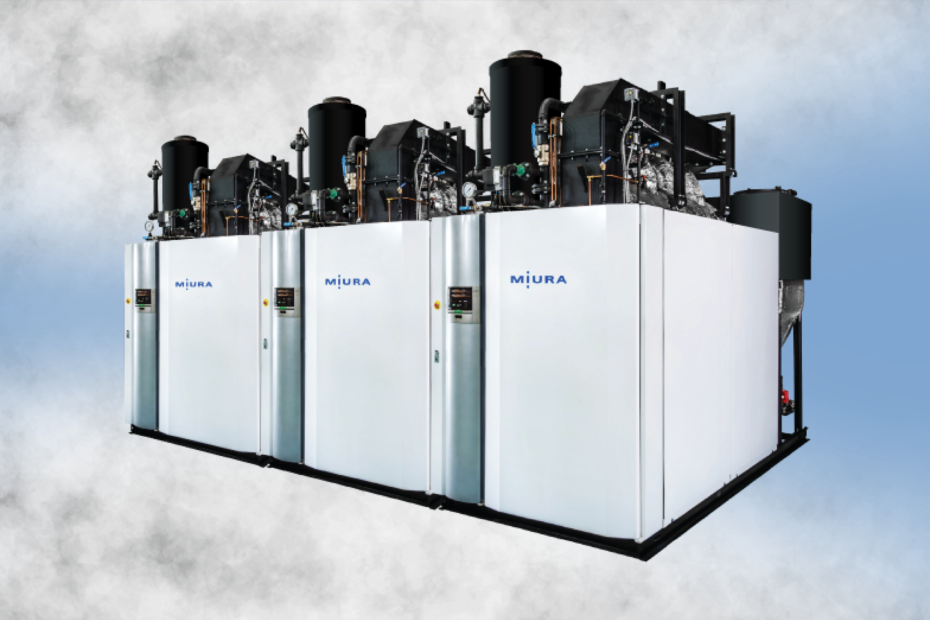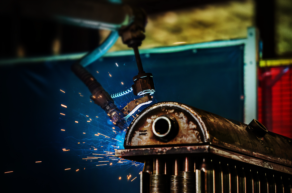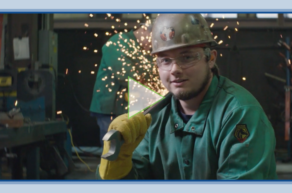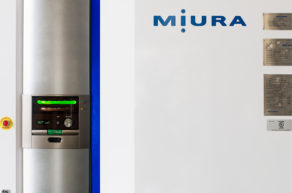Safer Steam Boilers Are a Matter of Physics & Physical Design
Today’s industrial steam boilers are remarkably safe.
Yet, experts suggest that some are safer than others, not simply based on physics, but on a range of everyday, routine operations.
One of those experts, Jim Manthei of AMS Steam, a subsidiary of Hot Water Products, Milwaukee, Wisconsin, has been specifying and installing steam boilers for almost 40 years.
For Jim, and many of his colleagues who install, operate, maintain, and manage steam boiler facilities, staying safe often means working in an environment that minimizes the potential for personal injury, disability (temporary or permanent), downtime, productivity shortfalls, worker’s compensation claims, and more.
“Catastrophic explosions are extremely rare,” cites Manthei. “While physics may suggest which type of boilers are safer in this respect, day-to-day safety concerns like burns, bumps and bruises and the range of injuries that can result from installation, operation, and routine maintenance are issues that people who work with and around steam boilers need to address on a regular basis.”
These everyday matters are less about physics and more about how a boiler is designed and engineered, including size and weight factors, ease-of-maintenance, accessibility to gauges, and a host of other issues that may increase the potential for injury, require additional staffing, and make day-to-day operations more time-intensive and demanding.
Consider, for example the enormous weight of doors that must be opened and closed during routine maintenance of traditional firetube boilers.
Mounted on a davit arm with heavy steel on the front and refractory in the back, these doors can weigh thousands of pounds and present enormous physical challenges. Often, jacks are required to line up the doors so bolts can be screwed in using an impact wrench, while standing on a ladder, causing an additional safety concern.
The potential for injury, based on this demanding procedure alone, can result in back problems due to the heavy lifting involved; finger trauma and amputation due to doors shifting while trying to line up holes; falling from the ladder due to required body manipulation to start bolts with an impact gun; finger lacerations due to replacing gaskets, eye injury due to gasket pins flying off, and more.
While every responsible company provides their staff with safety equipment, firetube boilers have extremely heavy doors, as opposed to watertube boilers, like Miura, which have none.
Miura’s physical design and innovative engineering offer a number of other safety and efficiency advantages over traditional firetube boilers including: Heavy duty, threaded plugs, instead of hand holes that reduces the potential for steam leaks and subsequent severe burns; no sight glass which reduces the potential for cuts and burns in the instance that the glass fails or breaks; no confined space entry requirements, easier check out and testing, full steam in 5 minutes, and more. In short, Miura’s technology reflects some of today’s most notable safety and efficiency advances.
Mike Reiber, a food and beverage processing expert, who has been around both firetube and watertube boilers, and currently uses Miura at his Dancing Goat Distillery notes: “Our Miura boilers give our boiler room a clean, open environment, which results in no clutter, easy to read the gauges, and easy to do water checks.”
When asked about day-to-day safety issues, Mike, who recommends boilers based on functionality first, maintenance and sanitation second, form third and safety always, stated: “When things are hard to get to, people don’t always do them. If it’s really hard to get to, people can get hurt, because they have to reach into things. With Miura, the design and layout of all the touch points makes sure that my operators, or myself, don’t come out with battle scars, so to speak, on our arms.”
Mike was also impressed with the reaction of old hands who were pipe fitters and steam guys, who used words like “awesome” and “amazing” to describe the Miura boiler set-up.
“Even our state inspector was blown away, not only by the boilers, but the entire boiler room that we’d put together.” added Mike. “What really impressed the inspector was the footprint of the Miura boiler. It’s so compact.”
The distillery’s boiler room is actually part of the tour they give the public, a testament to their total confidence in the safety of Miura boilers.
“The thing that’s huge for us is everybody’s concerned about boilers exploding,” added Reiber. “I think Miura’s ultra-low water design and once-through operation means that this never has to be a consideration. There’s no fear of impending doom that the boiler’s going to explode and fly 800 feet into the residential area.”
In his book, “Boiler Operator’s Workbook,” a well-accepted reference tool, the author R. Dean Wilson writes “Why is an explosion generally less disastrous in a watertube boiler than in a firetube boiler?” suggesting that physics may have a role in potentially catastrophic outcomes.
“In a watertube boiler,” he writes, “the large volume of water is distributed into many small tubes, and the volume of water in the drum is comparatively small. If one watertube bursts, the pressure in the entire pressure vessel is bled off slowly, and the tendency of the large body of water to flash into steam is minimized…”
“In a firetube boiler, a sudden crack in the shell or a flue pulled loose at the end causes the entire body of water to be subjected to a sudden and substantial drop in pressure. The huge volume of flash steam that results can cause an explosion of tremendous force.”
There is a commonly accepted belief in the boiler industry that watertube boilers are intrinsically safer than firetube boilers due to their design.
Among the leaders in watertube boilers is Miura, which not only provides this intrinsic safety advantage, but also incorporate industry leading safety enhancements & controls (i.e. tube temperature sensor, scale monitor, etc.) standard on every model, and not typically available on other watertube boilers.
With more than 140,000 units in operation, Miura’s once-through, watertube boilers have experienced once-through, zero catastrophic vessel failures resulting in casualty.
That’s the best safety record in the industry, but with catastrophic boiler explosions being rare in general, day-to-day safety issues must also be top-of-mind.
For those people who install, operate and maintain industrial steam boilers, it is important that they compare the watertube design to the firetube design, especially when maximizing safety is front and center.
Steam boiler safety is a combination of physics and physical design, but it all adds up to a more secure workplace environment.







